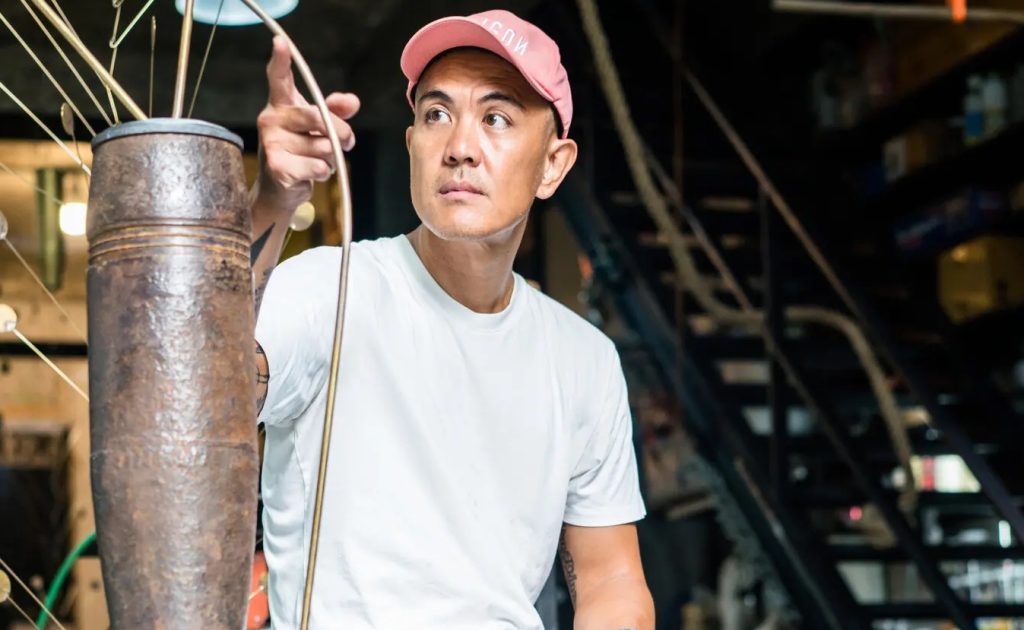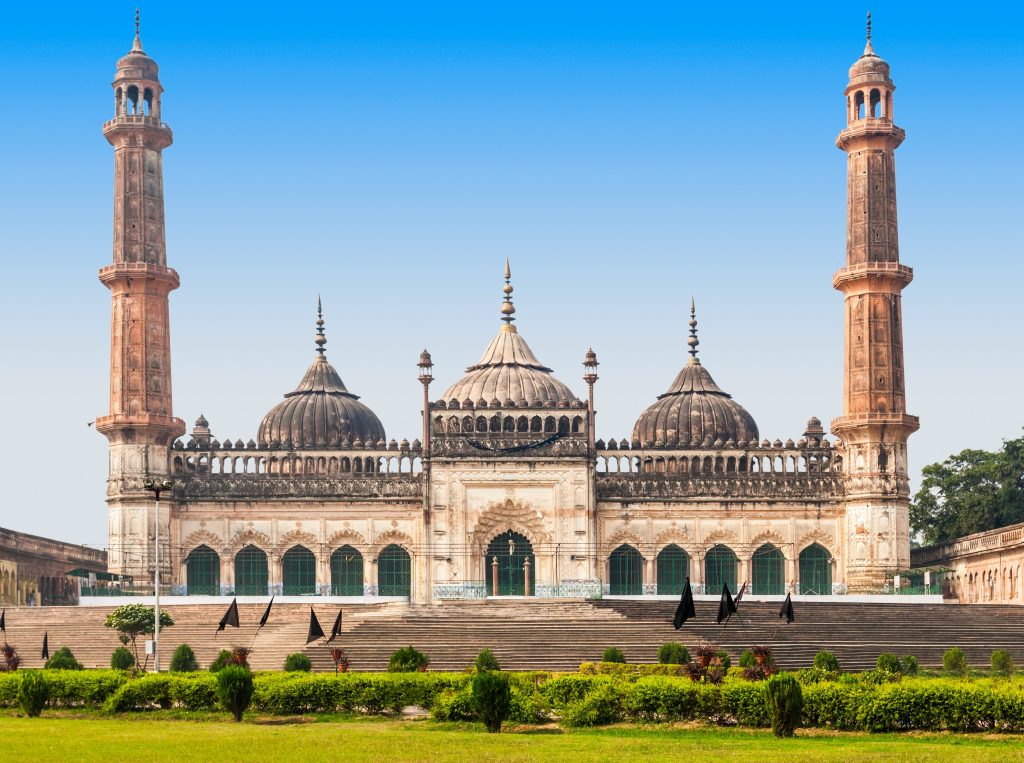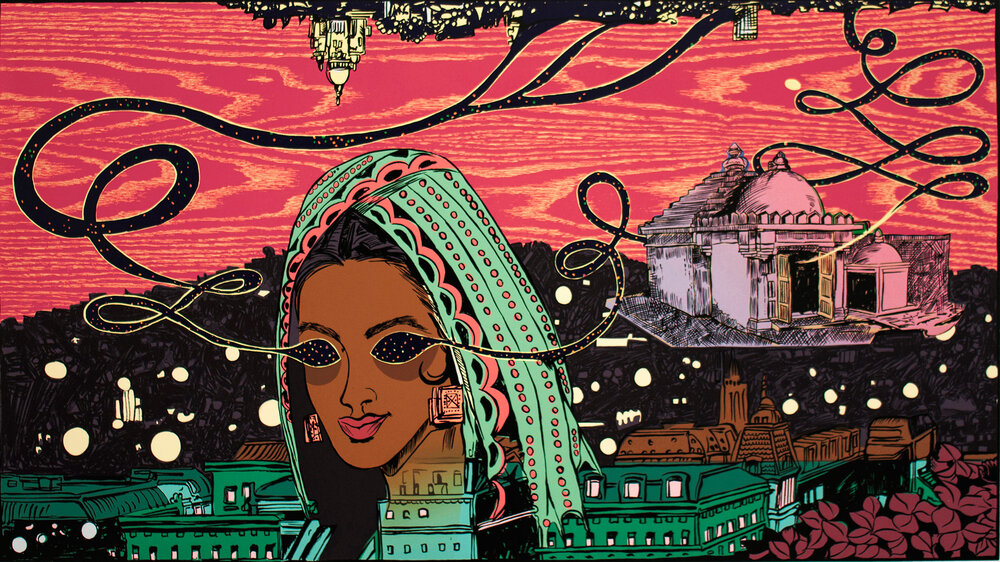Smriti Malhotra
Tuan Andrew Nguyen, an artist whose work uncovers haunting artefacts and stories from the Vietnam War, is set to showcase his videos and sculptures at the New Museum in Manhattan. In his upcoming exhibition titled “Tuan Andrew Nguyen: Radiant Remembrance,” Nguyen delves into questions of memory and identity with a personal and ambitious approach. Born in Ho Chi Minh City and raised in the United States, Nguyen’s exploration of his Vietnamese heritage and the intergenerational trauma caused by the war takes centre stage in his artistic endeavours.
Unearthing the Traces of War:
Nguyen’s film, “The Unburied Sounds of a Troubled Horizon,” features a distinct monument on a wooden footbridge in Quang Tri province, central Vietnam. This bridge, which connected the war-torn halves of the country during the Vietnam War, is now a poignant symbol of the lasting impact of the conflict. However, the bridge and its surroundings are littered with unexploded shells, a constant reminder of the trauma and devastation endured by the Vietnamese people. Through his work, Nguyen aims to explore how memory functions to help individuals cope with such deep-rooted trauma.
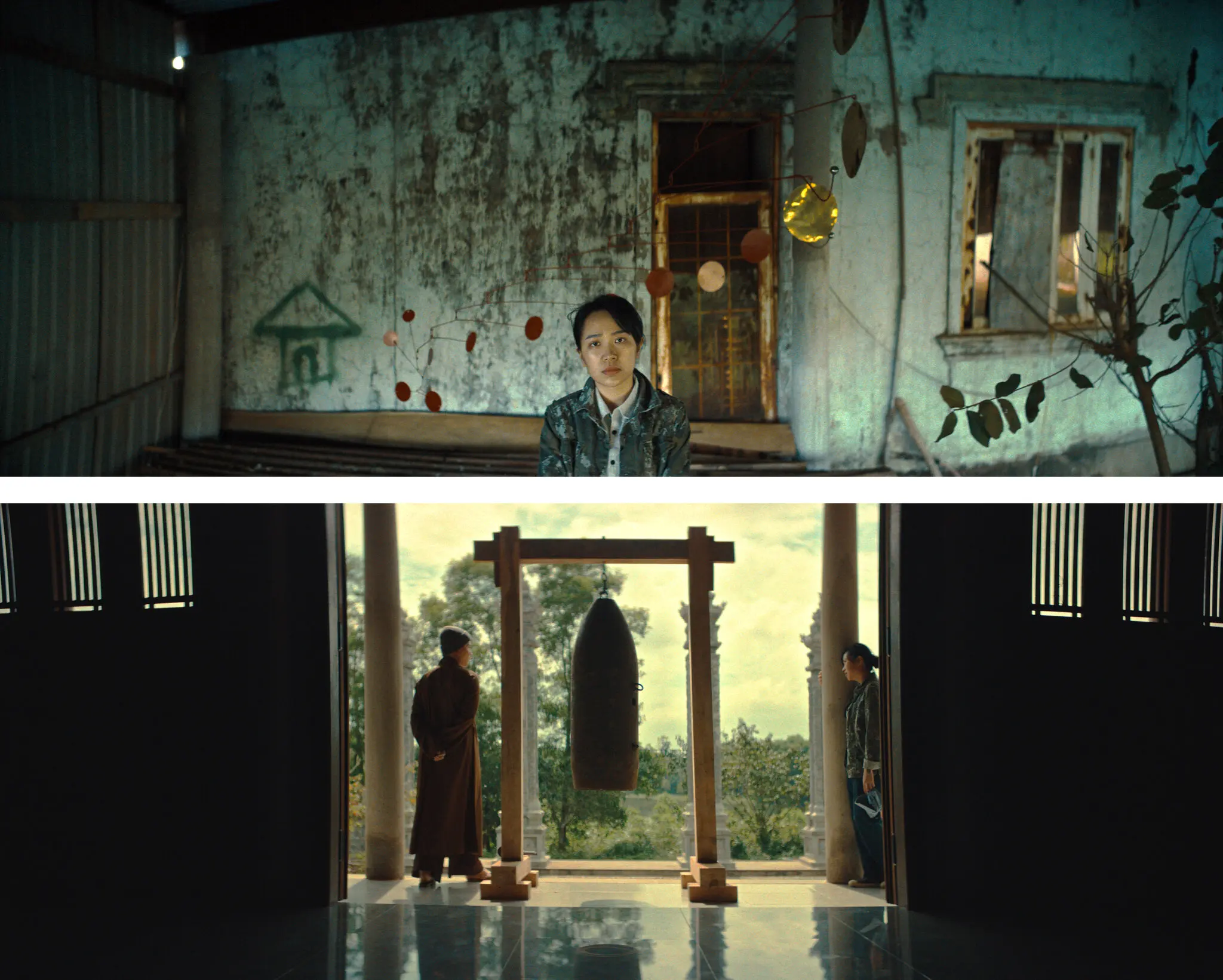
From Collective to Individual:
Nguyen gained recognition as a member of the renowned art collective, the Propeller Group. However, his current artistic endeavours have taken a more personal and introspective turn. Nguyen’s videos and artefacts, displayed in the New Museum exhibition, delve into his own history and experiences as a Vietnamese-American caught between two cultures. With a focus on memory and intergenerational trauma, Nguyen seeks to create a healing narrative that resonates beyond the boundaries of Vietnam.
Exploring Personal and Collective Histories:
Born to a former South Vietnamese draftee and having grown up in the United States, Nguyen’s journey led him back to Vietnam to connect with his roots. In his quest to ground himself in the place his parents had fled, Nguyen discovered stories of Vietnam that shaped his understanding of the country and its history. His exploration of personal and collective histories has uncovered tales of Senegalese soldiers forced to fight for the French in Vietnam, as well as Moroccan troops who deserted the French army. These stories, often overlooked in traditional history books, shed light on the complex and interconnected experiences of individuals affected by colonialism and war.
The Power of Art to Heal:
Nguyen’s artistic approach combines historical narratives with personal stories, intertwining them with elements of healing and resilience. His film, “The Island,” showcased at the 2017 Whitney Biennial, depicted the speck of Malaysia where his family first arrived after leaving Vietnam. In his upcoming exhibition, Nguyen focuses on Quang Tri and the resilient individuals who repurpose bombshells as flowerpots and coffee shop décor. Through his art, Nguyen aims to create a space for healing and understanding, exploring the connection between memory, trauma, and the human capacity for resilience.
Contextualising the Artwork:
While not included in the New Museum exhibition, Nguyen’s video titled “The Sounds of Cannons, Familiar Like Sad Refrains” adds a powerful contextual layer to his body of work. This video juxtaposes Defense Department footage from the 1960s of American warships firing into the Vietnamese jungle with recent footage of a bomb-disposal crew carefully handling a massive shell. Through this contrast, Nguyen highlights the deep impact of warfare on both humans and the land. The video’s haunting message raises questions about the essence of life and the devastating consequences of war.
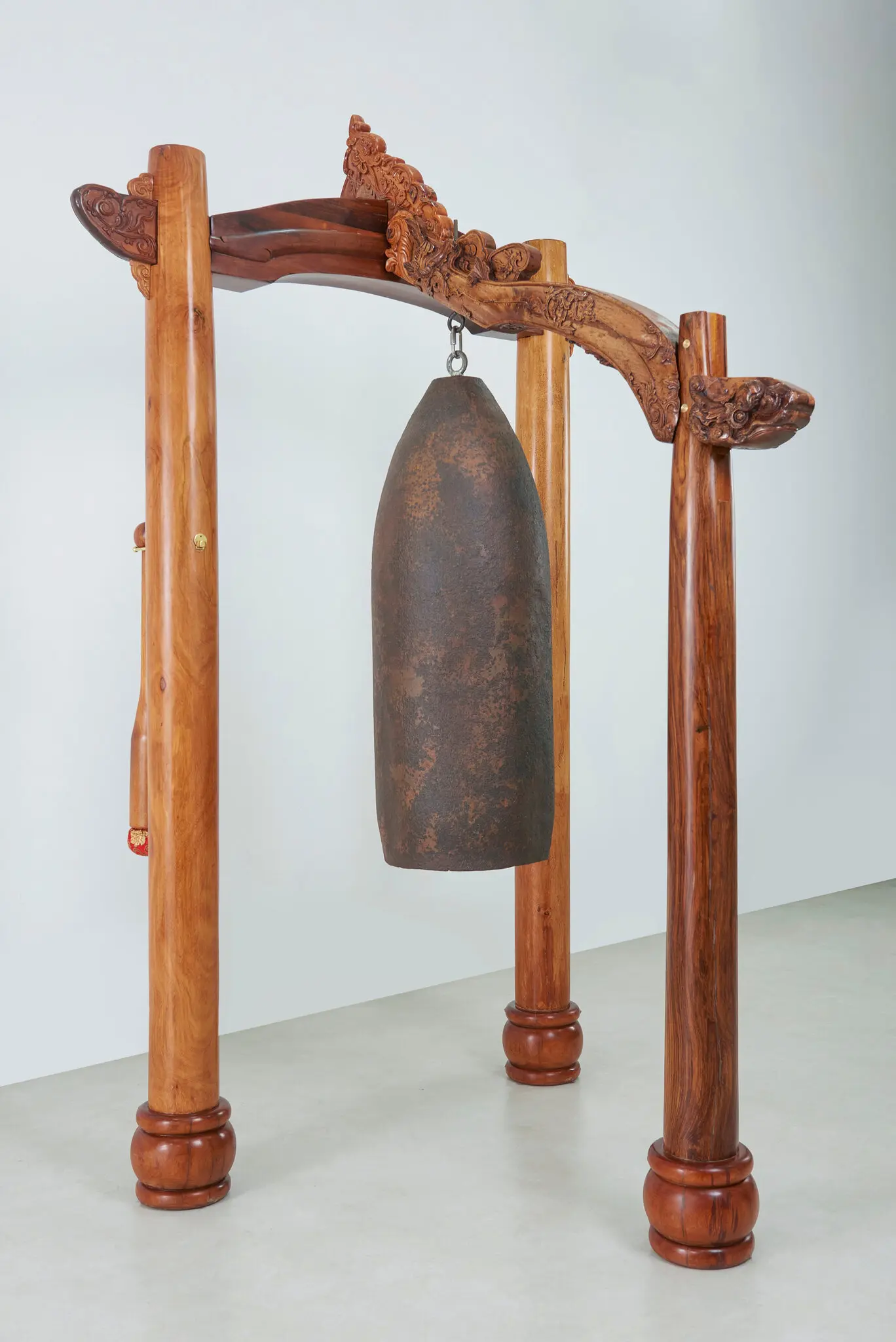
Tuan Andrew Nguyen’s upcoming exhibition at the New Museum, “Radiant Remembrance,” presents a deeply personal exploration of memory, identity, and intergenerational trauma in the context of the Vietnam War. Through his videos, sculptures, and artefacts, Nguyen uncovers the lingering effects of the war and offers a space for healing and understanding. His work brings attention to the unexploded shells that continue to haunt the landscape of Vietnam and explores the stories of individuals who have been profoundly impacted by the conflict.
Nguyen’s film, “Unburied Sounds,” takes viewers on a journey to Quang Tri province, where a reconstructed footbridge stands as a fragile connection between the North and South of Vietnam. The bridge, once a demarcation line during the war, now serves as a tragic reminder of the dangers that lie beneath the surface. The area is so heavily littered with unexploded shells that venturing off the well-worn paths can result in devastating consequences. Through the story of a fictional character named Nguyet, a young woman who scavenges metal from unexploded ordnance, Nguyen sheds light on the harsh realities faced by those living in this perilous environment.
Intertwined with Nguyet’s narrative are the stories of two historical figures, sculptor Alexander Calder and Buddhist monk Thich Nhat Hanh, both known for their antiwar activism during the ’60s and ’70s. Nguyen draws inspiration from their experiences to explore themes of peace, compassion, and the interconnectedness of all beings. Nguyet’s discovery of Calder’s work leads her to question her own identity and the possibility of reincarnation, while a visit to a Buddhist temple reveals the transformative power of compassion and forgiveness.
In addition to “Unburied Sounds,” Nguyen’s exhibition at the New Museum includes two shorter videos that delve into the legacy of French colonialism. “The Specter of Ancestors Becoming” follows the stories of Senegalese soldiers who were compelled to fight for the French in Vietnam, illuminating the often overlooked narratives of individuals from French colonies. “Because No One Living Will Listen” explores the experiences of Moroccan troops who deserted the French army and resettled near Hanoi. Through these narratives, Nguyen expands the scope of his exploration, shedding light on the wider global impact of colonialism and the complexities of postcolonial identities.
Nguyen’s artistry extends beyond video installations to encompass sculptures and artifacts created from repurposed bomb parts. His meticulously balanced mobiles, reminiscent of Calder’s iconic works, are assembled from bomb casings, serving as powerful symbols of transformation and resilience. Additionally, Nguyen’s sculpture of a bell, tuned to the healing frequency of 432 Hz, represents a tangible manifestation of healing and a tribute to the indomitable human spirit.
Through his art, Tuan Andrew Nguyen invites viewers to engage with the profound and often haunting legacies of war. He masterfully weaves personal narratives with historical events, offering a space for reflection, healing, and understanding. By exploring the interplay between memory, trauma, and resilience, Nguyen’s exhibition prompts us to contemplate our own connections to global moments of conflict and the potential for healing and growth within ourselves and our communities.
In “Radiant Remembrance,” Tuan Andrew Nguyen’s first major solo museum exhibition in the United States, he invites us to confront the past, embrace the complexities of our shared history, and strive for a more compassionate and interconnected future. Through his poignant storytelling and thought-provoking artworks, Nguyen demonstrates the transformative power of art in illuminating untold stories and fostering healing in the face of profound trauma.
https://www.instagram.com/tuan.andrew.nguyen/
Feature Image: The artist Tuan Andrew Nguyen, in his studio in Ho Chi Minh City, Vietnam. On an unexploded shell, he balances a mobile created from metal circles cut from unexploded ordnance.
Courtesy: Quinn Ryan Mattingly for The New York Times

